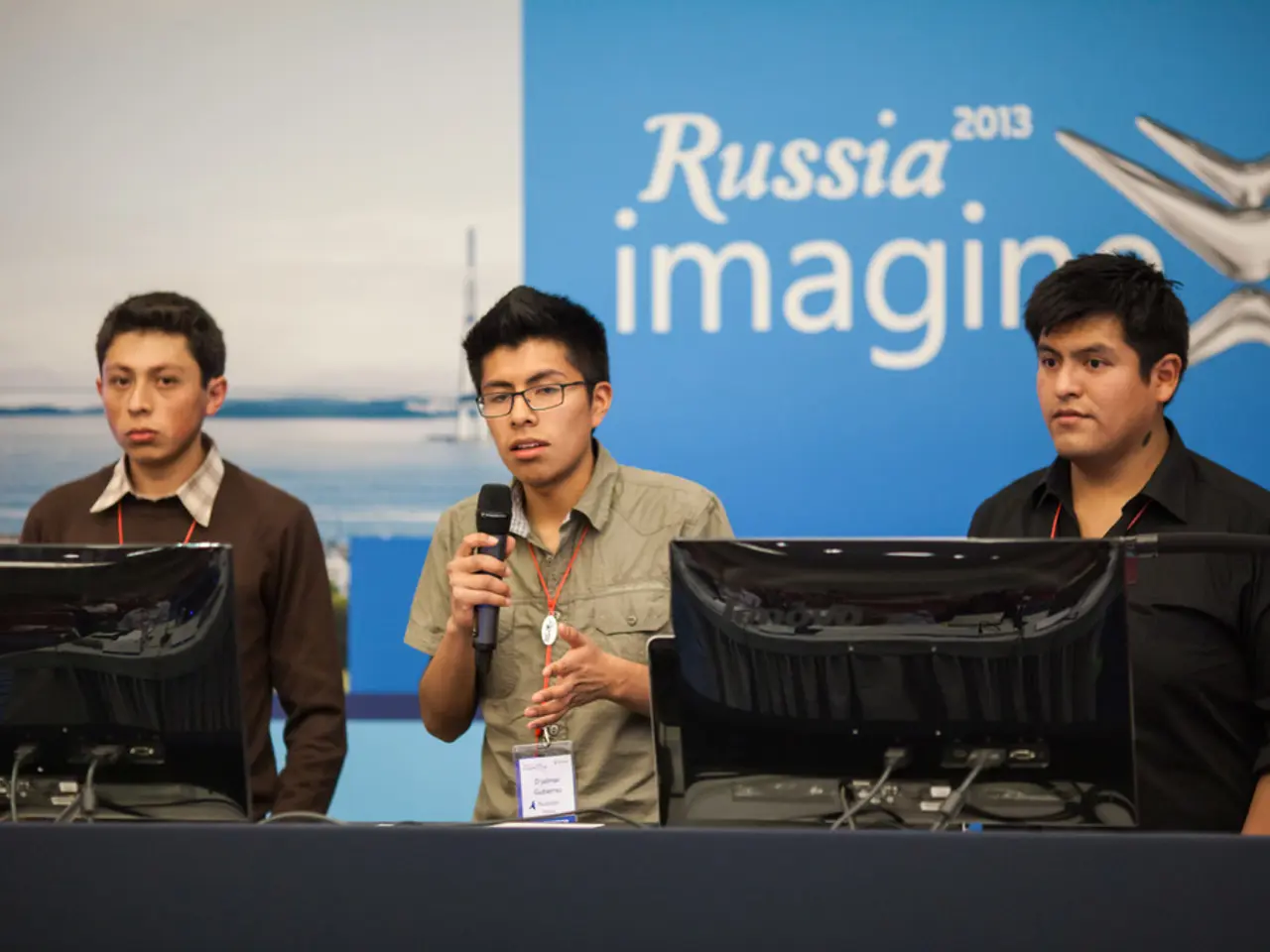Discussion on the outcomes of Putin and Trump's dialogue during their encounter in Alaska
In a series of high-stakes meetings, leaders from the United States, Russia, and Ukraine have been engaged in discussions aimed at resolving pressing issues that have been simmering since December 2021.
Last year, both sides focused on matters raised by Russia with the US and NATO. The meeting between Trump, the American leader of a nuclear power, and Putin, his Russian counterpart, lasted just under three hours. This encounter provided an opportunity to potentially postpone secondary sanctions on Russia's trade partners.
The main theme of the discussion was the ceasefire in Ukraine, a conflict that has had a profound impact on broader European security. However, as of late August 2025, formal negotiations between the United States and Russia on arms control, NATO, and European security architecture have not yielded substantive progress.
Russia maintains maximalist demands, including retaining all seized territory in Ukraine and seeking further concessions, which are unacceptable to Ukraine, the U.S., and European allies. This hardline position complicates arms control discussions and the potential for modifying NATO’s posture or the European security architecture in ways acceptable to all parties.
President Volodymyr Zelenskyy of Ukraine remains open to negotiation, but President Vladimir Putin refuses direct talks with him, and positions from the U.S., Russia, and Ukraine remain largely entrenched. Meanwhile, former U.S. President Donald Trump has influenced dialogue dynamics with inconsistent calls for ceasefires and peace talks, further complicating coherence in U.S. policy.
Elsewhere, Belarus, under the leadership of Lukashenko, has taken a stance on these issues that aligns with the Kremlin's leaders. Reports from American intelligence suggest that Belarus may possess nuclear weapons, and "Oreshnik" missiles have been or are about to be delivered. Given Trump's promises to visit Belarus' capital and Putin's stance on using Minsk as a negotiating platform, it's cautiously possible that the next meeting of the American and Russian presidents could take place in Minsk.
An unexpected phone call between Trump and Lukashenko of Belarus, potentially related to regional security and the deployment of missiles and tactical nuclear weapons, further complicates the already intricate web of relations.
The United States has a significant interest in arms control, particularly the treaties such as New START, INF, and outdated non-proliferation agreements. Lukashenko, in a conversation with U.S. President's representative John Cole, expressed the possibility of resolving issues on a respectful, mutually beneficial basis.
These issues include NATO's expansion, military activities in Ukraine, Eastern Europe, the Caucasus, and Central Asia, as well as the recognition of Russia's new territorial acquisitions. Despite the talks, a comprehensive agreement was not reached.
In these meetings, the American side, alongside Trump, included Secretary of State Marco Rubio, Presidential National Security Advisor Stephen Whitkoff, and Presidential Envoy Stephen Whitkoff. The Russian side was represented by Foreign Minister Sergei Lavrov and Presidential Aide for Foreign Policy Yuri Ushakov.
As these negotiations continue, the immediate conflict dynamics and Russia’s refusal to concede on key territorial issues overshadow discussions on arms control and European security architecture. The challenge lies in reconciling NATO’s defense posture with Russian security concerns and reshaping European security architecture to prevent further conflict.
- The discussions between the United States, Russia, and Ukraine, which primarily focus on the ceasefire in Ukraine and European security, extend to policy-and-legislation related to arms control, NATO, and the European security architecture, in light of the ongoing war-and-conflicts.
- Despite the high-stakes meetings and the involvement of key political figures such as Secretary of State Marco Rubio and Foreign Minister Sergei Lavrov, the ongoing war-and-conflicts in Ukraine, particularly the refusal of Russia to concede on key territorial issues, overshadow discussions on arms control and the reshaping of European security architecture, making politics and general-news closely intertwined in this context.






